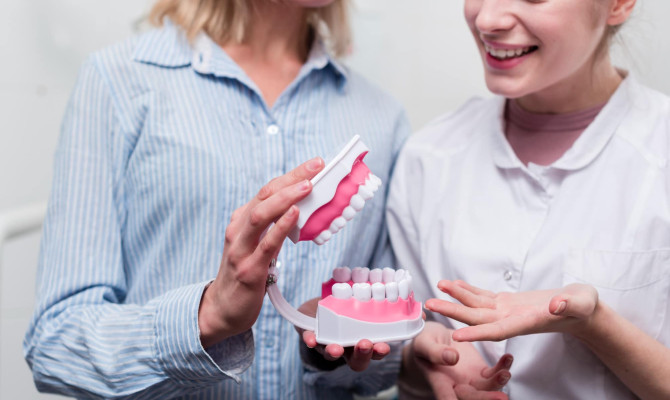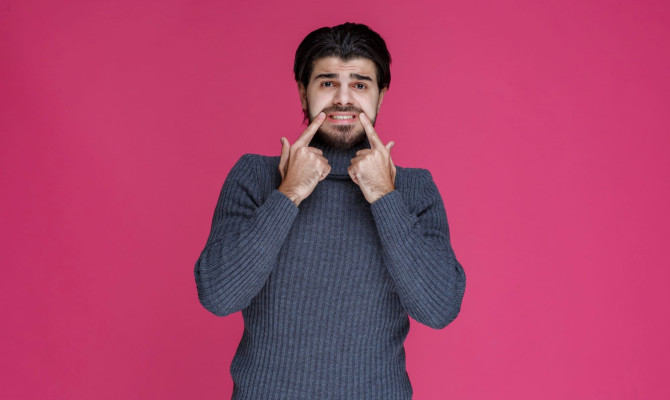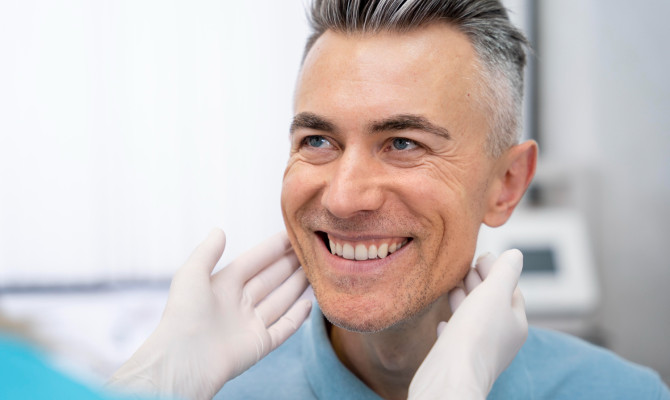Basics of brushing teeth

- Brushing
- 16 Aug 2023
Overview
What is brushing ?
Brushing your teeth, an essential part of oral hygiene, involves using a toothbrush and toothpaste to get rid of food debris and plaque from your teeth and gums.
Many dental and oral health issues can be avoided by maintaining proper oral hygiene through regular brushing.1Overview| Researched based study from Nidcr.nih.gov

Importance
Importance of tooth brushing
Prevents tooth decay
- Regular tooth brushing aids in removing plaque, a bacterial film that sticks to teeth and can lead to tooth decay. Gum disease, which harms the gums and bones that support the teeth, can also result from plaque buildup.
Improves breath
- It assists in removing food debris that may contribute to bad breath. Additionally, it aids in eradicating microorganisms that might cause offensive odors.
Eliminate stains
- Brushing your teeth can get rid of surface stains from food and drinks including coffee, tea, and red wine.
Promotes overall health
- Numerous health problems, including diabetes, heart disease, and stroke have been related to poor oral hygiene.
Keeps gum disease at bay
- Regular tooth brushing can reduce plaque that can irritate the gums and cause gum disease.
Keeps a bright smile.
- By removing surface stains, good oral hygiene may keep teeth appearing white and bright.
Reduces expenses
- Regular tooth brushing will help to prevent dental issues, which can help you avoid expensive dental procedures.
Freshens’ breath
- Regular brushing and flossing can help remove bacteria and food particles that may contribute to bad breath.1Importance| Researched based study from Nidcr.nih.gov
Process
How should I properly brush my teeth?
- Apply toothpaste and wet your toothbrush.-apply toothpaste in a pea-sized amount to the wet toothbrush bristles while still damp.
- Grab your toothbrush-with the bristles of your toothbrush pointed toward your gums, hold it at a 45-degree angle to your teeth.
- You should clean the outer surfaces of your teeth.-brush the outsides of your teeth in gentle circular motions, beginning with your upper teeth and proceeding down to your lower teeth. Be sure to brush your back teeth thoroughly.
- Brush all inner surfaces-brush the chewing surfaces of your molars and premolars by tilting the brush vertically and using gentle up-and-down motions.
- Brush your tongue-brush your tongue lightly with the bristles of your toothbrush to eliminate bacteria and freshen your breath.
- Rinse and spit-after spitting the toothpaste into the sink, properly rinse your mouth with water.3Process| Researched based study from Nlm.nih.gov
Basics
Basics of brushing
How long do I need to brush my teeth?
- Brush for at least two minutes each time, twice a day. The length of time that dental experts advise is this.
- Use a timer or an electric toothbrush with an integrated timer to ensure that you are brushing for the full two minutes. Additionally, it’s crucial to brush gently and avoid using excessive pressure.
How frequently should I brush my teeth?
- It is advised that you brush your teeth twice day or right away following each meal.
- Because saliva production drops while you sleep, which might make your mouth more susceptible to harmful bacteria, brushing in the morning and right before bed is crucial.
Brushing the teeth of a child
- Choose a toothbrush with gentle bristles that are made especially for kids. They should have no trouble grasping it.
- For kids under the age of six, a pea-sized amount of fluoride toothpaste should be used.
- Assist your youngster with tooth brushing. Using circular strokes, clean the front and rear of their teeth.
- Your child’s molars’ chewing surfaces should be cleaned with a toothbrush. Be sure to clean the entire surface.
- Gently brush their tongue.2Basics| Researched based study from Nidcr.nih.gov
How to brush the teeth with braces?
- Use floss threaders, interdental brushes, or a toothbrush with soft bristles to clean between your teeth and under the wires of your braces.
- Food particles can easily become stuck in your braces, therefore it’s important to brush your teeth right away after every meal.
- By seeing your orthodontist frequently, you can ensure that your braces and teeth are clean and in good condition.
Toothbrush
Toothbrush types
Manual toothbrush
- You must manually move the brush back and forth to clean your teeth with these conventional toothbrushes.
- They are available in a range of shapes, sizes, and bristle types. They are typically the least expensive choice.
Electric toothbrush
- These are the ones that automatically clean your teeth by rotating or oscillating. They can be rechargeable or powered by batteries, and they come in a variety of sizes and shapes.
- They can be more cost-effective at removing plaque and lowering the risk of gum disease, but they are typically more expensive than manual toothbrushes.
Sonic toothbrushes
- These are similar to electric toothbrushes, except they produce more comprehensive sonic waves by vibrating at high frequencies.
- They can be more cost-effective at removing stains and enhancing gum health than electric toothbrushes, which typically cost more money.
Interdental brushes
- These are small brushes made specifically for cleaning around braces and other dental appliances and in between teeth.
- They often contain bristles of different diameters to fit between teeth and are shaped like a small Christmas tree.
Disposable brushes for teeth
- Travelers and those who need to clean their teeth on the go frequently utilize these single-use products.
- They typically have pre-applied toothpaste and are compact and small.
Toothpaste
About toothpaste
Toothpaste is a substance in gel or paste consistency usually applied on a toothbrush to maintain the cleanliness and beauty of teeth.
How do you select the best toothpaste?
The best toothpaste for you will depend on several things, including your oral health requirements, personal preferences, and dental issues. Before purchasing one, keep these things in mind.
Fluoride content
- The fluoride in toothpaste is essential for supporting tooth enamel strength and preventing tooth decay. If you are prone to cavities, specifically, look for fluoride-containing toothpaste.
Tartar control
- If you have tartar accumulation on your teeth, you might want to use toothpaste with tartar control ingredients. They contain components such as pyrophosphates, which can aid in reducing tartar and preventing its formation.
Whitening
- Consider using a toothpaste that is made to assist eliminate surface stains if you want to whiten your teeth. These components, like baking soda or hydrogen peroxide, can gradually whiten teeth.
Sensitivity
- Choose a toothpaste with compounds like potassium nitrate or stannous fluoride if you have sensitive teeth to help with the issue.
Sensitivities or allergies
- Select a toothpaste free from any substances you are allergic to, such as sulfates or artificial sweeteners.
Mistakes

Avoid common brushing mistakes
Be careful while brushing the teeth to avoid any damage .
Brushing aggressively.
- Too-aggressive tooth brushing might irritate your gums and harm your tooth enamel.
Not brushing for long enough
- Make sure to spend at least two minutes brushing your teeth each time.
Brushing immediately after eating
- The enamel of your teeth might be harmed by brushing them right away after consuming acidic meals or beverages. Prior to brushing your teeth, wait at least 30 minutes after eating or drinking.
Using the incorrect toothbrush
- It can be challenging to effectively clean every area of your mouth if you use a toothbrush that is either too big or too little.
Failing to brush your teeth
- Bad breath can be brought on by a buildup of bacteria on the tongue.
Keep your toothbrush the same regularly.
- Your toothbrush’s bristles may eventually become ragged and less valuable Replace the brushes every three to four months, or sooner, if they start to wear.
Risk
If I clean my teeth too vigorously, what happens?
Here are a few potential outcomes:
- Teeth sensitivity-Too much cleaning might damage your teeth’s enamel and make them sensitive.
- Recessed gums-Additionally, excessive brushing might cause your gums to recede, exposing the tooth root.4Risk| Researched based study from Nlm.nih.gov
- Bruising and irritation-Too forceful brushing motion might irritate the gums and make them bleed.
- Toothbrush abrasion-Too aggressive a brushing motion might irritate the gums and make them bleed.
- less effect-Your toothbrush may also become less effective due to overuse.4Risk| Researched based study from Nlm.nih.gov
Diseases
Diseases associated with dental health
A cardiovascular condition
- A higher risk of cardiovascular illness, including heart attacks and stroke, has been associated with poor dental health.
Diabetes
- Diabetes gum disease can result from this, which makes it more difficult to manage blood sugar levels.
Respiratory infections
- Especially in elderly persons, raise the risk of respiratory infections like pneumonia.5Disease| Researched based study from Nlm.nih.gov
Complications during pregnancy
- Preterm birth and low birth weight are two outcomes that could be impacted by gum disease during pregnancy.
Kidney disease
- Poor oral health and chronic renal disease have been related; kidney disease patients may experience more significant gum problems.
Mouth cancer
- Dental cancer risk has been linked to poor dental health.5Disease| Researched based study from Nlm.nih.gov
Dental cavities
- Dental caries, sometimes called tooth decay or dental cavities, are a typical issue with oral health. They develop when the acid bacteria produce in plaque damages the tooth’s tough outer covering. Dental cavities can result in pain, infection, and tooth loss if not addressed.7Disease | Researched based study from Nhs.uk
Warning signs
What are the signs of inappropriate brushing ?
Some common warning signs and symptoms of bad brushing habits are
- Sensitivity of the teeth, particularly to hot or cold temperatures.
- Discomfort or pain while eating or drinking.
- Teeth with prominent craters or holes
- Bad breath 7Warning signs | Researched based study from Nhs.uk
Tips
Tips for better oral health
Tips for maintaining good oral hygiene
Mouthwash
- Using an antiseptic mouthwash can assist in eradicating microorganisms and enhancing breath freshness.
Go to the dentist frequently
- Regular dental exams and cleanings are necessary to preserve good oral health and defend off dental disorders in the future.
Limit sugary and acidic foods
- Acidic and sugary foods can erode the enamel on teeth. You should consume these foods and drinks in moderation.
Drink a lot of water
- Water consumption can help prevent dry mouth by rinsing away food particles and microorganisms from the mouth.
Stop smoking
- Smoking affects gum disease, foul breath, and tooth discoloration. Your overall health can be improved by giving up smoking.6Tips | Researched based study from Cdc.gov
Takeaway
Key Takeaways
- Correct tooth brushing and flossing techniques are crucial for dental health and general well-being.
- When used properly, a toothbrush is essential for maintaining good dental hygiene.
- The above suggestions can help you maintain healthy gums and avert dental issues.
Any feedback on this article?
 This Articles content was accurate
This Articles content was accurate Very Informative Article
Very Informative Article I have a question or a comment
I have a question or a comment
 This article contains inaccurate content
This article contains inaccurate content This article was not helpful
This article was not helpful I have a question or a comment
I have a question or a comment
We appreciate your helpful feedback!
Checkout our social pages
References
-
National Institute of Dental and Craniofacial Research
Oral Hygiene | Overview | Importance
-
National Institute of Dental and Craniofacial Research
Oral health & Aging | Basics
-
National Library of Medicine
Promoting parenting strategies to improve tooth brushing in children: design of a non-randomised cluster-controlled trial | Process
-
National Library of Medicine
Can tooth brushing damage your health? Effects on oral and dental tissues | Risk
-
National Library of Medicine
Systemic Diseases Caused by Oral Infection | Disease
-
Centers for Disease Control and Prevention
Basics of oral health | Tips
-
National Health Service
Tooth decay | Warning sign | Disease



































